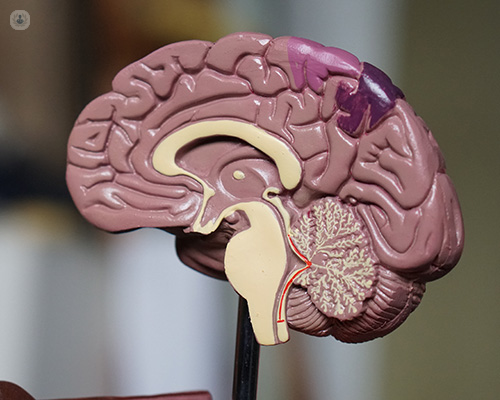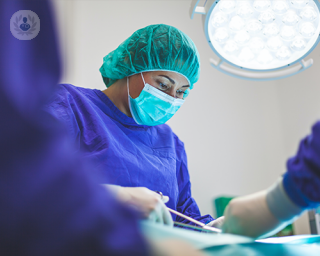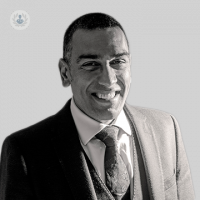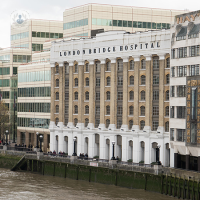Chiari malformations
Miss Stana Bojanic - Neurosurgery
Created on: 11-13-2012
Updated on: 10-17-2023
Edited by: Jay Staniland
What is a Chiari malformation?
Chiari malformations are structural defects in the skull and cerebellum - the part of the brain that controls balance. These malformations occur when part of the skull is smaller than it should be, or is deformed, and causes the brain to be pushed down into the spinal canal. This results in pressure and blocks the flow of cerebrospinal fluid, which protects the brain and spinal cord.
A Chiari malformation will be diagnosed by a specialist neurosurgeon, and treatment plan will be created.

Prognosis of a Chiari malformation
The prognosis of the condition will vary depending on the person experiencing it. Sometimes, the symptoms will be barely noticeable, while in others the disease can become progressive and can cause serious problems. Some of these problems include:
- Syringomyelia - a cyst or cavity that is formed inside the spine.
- Hydrocephalus - this is where an accumulation of fluid forms inside the brain causing increased pressure on the skull.
- Spina bifida - a condition in which the spinal cord or its covering isn't fully developed.
- Tethered cord syndrome - this is where the spinal cord is attached or ‘tethered’ within the spinal column causing severe damage to nerves and lower body muscles.
- Spine curvature - curvature of the spine may occur.
Symptoms of a Chiari malformation
Often, people with Chiari malformations do not have symptoms throughout their entire lives. However, it should be noted that symptoms can change in each person, depending on the state of the tissues and the accumulation of cerebrospinal fluid pressure.
Babies affected by this problem may have problems feeding, with difficulty swallowing, excessive drooling, nausea, vomiting, respiratory problems, developmental problems and an inability to gain weight.
Chiari malformations are categorised by the severity of the disorder and the parts of the brain that protrude into the spinal canal. There are three types.
Type I:
In this type of malformation, a headache is frequent and intense, and usually appears after a sneeze or a cough. Some symptoms of patients with type I malformations include the following:
- neck pain
- balance problems
- co-ordination problems in the hands
- numbness of hands and feet
- tingling
- dizziness
- difficulty swallowing
- nausea and vomiting
- vision problems; blurred or double vision
- ringing in the ears
- weakness
- slow heart rate
- scoliosis
- breathing disorders
Type II:
Those affected by Type II generally have more severe symptoms than Type I and usually present problems during childhood. It can be quite serious during infancy and requires surgical treatment. People may experience the following symptoms:
- changes in the way you breathe
- difficulty swallowing
- fast downward eye movement
- weakness in the upper limbs
Type III:
this is the rarest, but most serious form of Chiari malformation. A part of the cerebellum or brainstem extends or herniates, through an abnormal opening in the back of the skull. This malformation is diagnosed during pregnancy by ultrasound or just after birth. Unfortunately, this type of malformation has a high mortality rate, and in turn, is associated with different neurological problems.
Diagnosis
To diagnose these problems, a specialist will perform a physical examination. Some tests to diagnose the problem are:
Causes of Chiari malformations
These malformations appear when, for natural reasons, the part of the skull containing the cerebellum is too small or has some kind of deformity. Subsequently, it exerts pressure and pushes the brain, moving the lower part towards the spinal canal.
In the case of type II malformations, these are usually associated with a form of spina bifida, known as myelomeningocele.
The moment the brain is at the top of the canal, it can interfere with the flow of cerebrospinal fluid, which can block brain signals to the body.
Cerebellum pressure on the cord can also cause other neurological problems.
Prevention
There is evidence to suggest that these malformations can run in families, so it might have a genetic cause.
Treatment
Although there are cases in which the malformations are totally asymptomatic and have no impact on the patient's life, in other cases the signs and symptoms are very evident, so surgery is required to try to alleviate the symptoms or halt the progression of the condition.
The most frequent surgery to treat these malformations is called decompression surgery; an intervention that helps reduce the pressure on the brain and allows the fluid to flow normally around the brain and spinal cord.
Other procedure that might be necessary include:
- Endoscopic third ventriculostomy (ETV) – a small hole is made in the wall of one of the cavities of the brain to release trapped fluid.
- Untethering – this applies to some children with a Type I Chiari malformation where they have a tethered spinal cord, so a procedure to untether and separate the spinal cord is carried out to release tension on the spine.
- Spinal fixation – a hypermobility syndrome, such as Ehlers-Danlos syndrome might present in Type I, so surgery to stabilise their spine is necessary.
- Ventriculoperitoneal shunting – in order to drain any trapped fluid and relieve pressure, a small hole is drilled into the skull and a thin tube, known as a catheter, is passed directly into the brain cavity.
Which kind of specialist treats Chiari malformations?
A neurologist, or a neurosurgeon, diagnoses and treats Chiari malformations, however, patients benefit the most from a team approach, in which neurosurgeons collaborate with other specialists, such as cardiologists, otolaryngologists and gastroenterologists.













